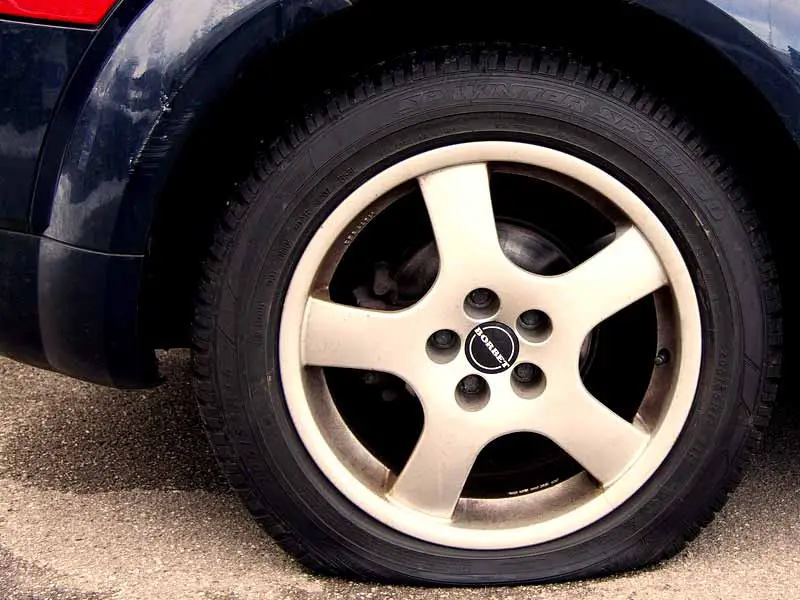What tire pressure is too low?: For prolonging the tire’s life as well as to have better gas mileage, it is recommended to properly check the tire at regular intervals whether it is properly inflated or not. The pressure of the tire is also influenced by the variation in weather conditions.

For example, normally it is observed that the fluctuations in the pressure of the tire occur during cold conditions. The amount of inflation recommended for most tires generally depends on cold tire temperatures.
The lowest operatable pressure is about 20 Pounds per square inch (psi) however this is still considered dangerous and is not recommended by most tire manufacturers.
If the pressure gets lower than the forgoing threshold, the tire would be considered flat, and further driving may cause damage to the tire.
The recommended pressure range is between 32 to 35 psi. A change of 10 degrees in temperature reduces the pressure of the tire by one psi.
Such situations are not that harmful because, during driving, friction will assist to warm up the tire making pressure back to normal.
Some cars would show the TPMS indication when the pressure becomes too low.
Factors affecting the tire’s pressure
Apart from some pointed objects like nails putting holes in tires, some other factors influencing the pressure include slow leakage and air temperature.
Slow leakage is kind of similar to a puncture or a hole.
If the tire is punctured, the air will leak out in a short amount of time but during slow leakage, the air takes a longer time to get out of the tire and eventually causing it to flatten.
This occurs due to cracking, improper sealing between wheel and tire, or may be due to improper treatment of the previous puncture.
The other factor affecting the tire is the air temperature.
When the air gets warm it expands and when it gets cooler it causes it to contract.
Due to this contraction, the tire is needed to be inflated at regular intervals to help maintain the pressure of the tire.
Symptoms depicting low air pressure
Fuel Economy
The consumption of the fuel is dependent on the tire’s pressure.
If the pressure of the tire is below the recommended value, the engine is needed to put more effort and thereby more consumption of fuel occurs.
For the tire having a small amount of deflation, it cannot be recognized easily but if the vehicle is moving at a very high speed, it could make a huge difference.
An estimated loss of nearly 3 miles per gallon takes place if the tire is not inflated properly so it is a major factor in disturbing the fuel economy.
Wearing of tire
Tire wearing is another sign of low air pressure.
For a tire with low air pressure, it does not have a uniform tread and wearing occurs on both of its sides making the central part thicker.
If such a situation takes place the tire is needed to be inflated.
Greater Stopping Distance
The tire is assumed to have a lower pressure if it covers more distance than normal before a complete stoppage.
The situation becomes more obvious during extreme weather conditions like heavy rainfall and snow.
If this occurs, it might be due to minimum tire pressure.
Uncomfortable driving
Another symptom portraying a low-pressure tire is difficulty while driving.
As the vehicles are designed to operate under ideal conditions so negative results occur when the temperature is too low.
Sloppy handling, problems faced in keeping the vehicle in one lane, or unprecise steering are all the primary symptoms of an under-inflated tire.
Consequences of Low-pressure tire
Having a low-pressure tire is a fairly common problem but it could also lead to some serious consequences.
The two major problems that may occur due to insufficient tire pressure are as follow:
Unpredictive loss of control:
Bad weather conditions cause the pressure of the tire below the recommended value which could further lead to unexpected loss of control at any time.
Furthermore, the under-inflation of the tire may lead to accidents even when there are no signs of such poor handling.
If a user observes such troubles where the vehicle suffers sudden control losses, the tire must be inflated to a recommendable pressure to avoid such unwanted circumstances.
Blowouts:
The most dangerous consequence of having below-par air pressure is a blowout of the tire that occurs due to a weak structure or excessive wearing.
A sudden failure of parts occurs due to insufficient tire pressure integrated with the vehicle’s weight and a hefty load of tires.
Mostly these blowouts come about unexpectedly which could sometimes prove to be fatal.
So, to avoid such situations pressure of the tire should be maintained at a prescribed figure.
Conclusion
The pressure of the tire is usually measured in Pounds per Square Inch or psi.
It is extremely important to maintain the pressure of the tire at a recommended value as provided by the manufacturer.
A hole or puncture along with slow leakage due to cracking and air temperature are the major factors that cause tire pressure to get lower than the prescribed limit.
Some primary symptoms of minimum pressure include higher fuel consumption, excessive wearing of the tire, greater distance covered by the vehicle before it completely comes to rest, or having an uncomfortable experience while driving.
If this situation is not monitored priorly, it may cause the vehicle to lose control or sometimes even cause a blowout of the tire which sometimes leads to deadly situations.
